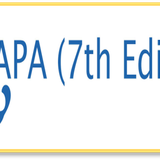Investment Readability Through The Digital Platform
DOI:
https://doi.org/10.24912/je.v27i2.1058Abstract
In this modern era, technology had so much improvement so as in investment, there is so many online-investment now a days from illegal investment to trusted investment approved by government. There is a tremendous amount of investment fraud that make society doubtful to do online investment, especially for student which have a limited source of money. But it will be different if the individual had a basic knowledge in financial and investment, even more the information of investment and financial support them whatsmore the confidence in each individual to make decision for their own money. That kind of factors will increase student interest on investment. The purpose of this research to know the influence of financial inclusion, financial literacy, financial self-efficacy and investment knowledge towards investment interest of economic students in Tarumanagara University through digital platform. Researchers used primary data by distributing questionnaires to all economic students in Tarumanagara University with a sample of 100 respondents using purposive sampling The data analysis method in this study is a quantitative method using Structural Equation Modeling (SEM), which is processed with the help of SmartPLS software version 3.3.3. The results of this study indicate that financial inclusion, financial literacy, financial self-efficacy and investment knowledge have significant and positive effect on interest investment of economic students in Tarumanagara University thorugh digital platform.
References
Ajija, S. R., Sari, D. W., Setianto, R. H., & Primanti, M. R. (2011). Cara cerdas menguasai EViews. Salemba Empat.
Akhtar, F., & Das, N. (2019). Predictors of investment intention in Indian stock markets: Extending the theory of planned behaviour. International Journal of Bank Marketing, 37(1), 97–119. https://doi.org/10.1108/IJBM-08-2017-0167
Arani, N. Z. (2021). Jadi Tren Selama Pandemi, Ini Cara Investasi di Ajaib. Finance.Detik. https://finance.detik.com/fintech/d-5874893/jadi-tren-selama-pandemi-ini-cara-investasi-di-ajaib
Astutik, W. S. (2021). Manajemen Investasi. Media Nusa Creative (MNC Publishing).
Azwar, S. (2015). Sikap manusia teori dan pengukurannya (edisi ke-2). Pustaka Pelajar.
Baihaqi, M. (2016). Pengantar Psikologi Kognitif. PT Refika Aditama.
Dasra Viana, E., Febrianti, F., & Ratna Dewi, F. (2021). Literasi Keuangan, Inklusi Keuangan dan Minat Investasi Generasi Z di Jabodetabek Financial Literacy, Financial Inclusion, and Investment Interest Generation Z’s in Jabodetabek. Jurnal Manajemen Dan Organisasi (JMO), 12(3), 252–264.
Dinç Aydemir, S., & Aren, S. (2017). Do the effects of individual factors on financial risk-taking behavior diversify with financial literacy? Kybernetes, 46(10), 1706–1734. https://doi.org/10.1108/K-10-2016-0281
Djaelani, Y., & Zainuddin, Z. (2021). Experimental Study: Financial Literacy and Financial Efficacy of Interest in Investing. ATESTASI : Jurnal Ilmiah Akuntansi, 4(2), 352–364. https://doi.org/10.33096/atestasi.v4i2.668
Fachrunissa, O. (2018). Jurusan Manajemen Fakultas Ekonomi Universitas Negeri Surabaya. Jurnal Ilmu Manajemen, 4(2), 6–15.
Farrell, L., Fry, T. R. L., & Risse, L. (2016). The significance of financial self-efficacy in explaining women’s personal finance behaviour. Journal of Economic Psychology, 54, 85–99. https://doi.org/10.1016/j.joep.2015.07.001
Ghozali, I. (2014). Structural Equation Modeling Metode Alternatif dengan Partial Least Squares (PLS) (Edisi ke-4). Universitas Diponegoro.
Ghozali, I. (2018). Aplikasi analisis multivariate dengan program IBM SPSS 25 edisi ke-9 (Edisi ke-9). Universitas Diponegoro.
Hair, J. F., Sarstedt, M., Hopkins, L., & Kuppelwieser, V. G. (2014). Partial least squares structural equation modeling (PLS-SEM): An emerging tool in business research. European Business Review, 26(2), 106–121. https://doi.org/10.1108/EBR-10-2013-0128
Hartono, J., & Abdillah, W. (2014). Konsep dan aplikasi PLS (partial least square) untuk penelitian empiris. BPFE.
Hira, T. K., Sabri, M. F., & Loibl, C. (2013). Financial socialization’s impact on investment orientation and household net worth. International Journal of Consumer Studies, 37(1), 29–35. https://doi.org/10.1111/ijcs.12003
Ilham, R. N., Fachrudin, K. A., Sinurat, M., & Khaddafi, M. (2020). Manajemen Investasi (Legal Investment Versus Fake Investment) (N. Bachri & Erlina (eds.); Cetakan Pe). CV Jejak.
Jatmiko, B. P. (2021). Bukan Modal Besar, Ini Tips Sukses Investasi Online. https://money.kompas.com/read/2021/11/01/140400926/bukan-modal-besar-ini-tips-sukses-investasi-online
Karima, L. (2018). Analisis Faktor-Faktor Yang Mempengaruhi Minat Mahasiswa Untuk Melakukan Investasi Di Pasar Modal Syariah (Studi Kasus Mahasiswa Fakultas Ekonomi Universitas Islam Indonesia). Universitas Islam Indonesia.
KSEI. (2022). Statistik pasar modal Indonesia. http://www.ksei.co.id/files/Statistik_Publik_Desember_2021.id
Kusmawati. (2011). Pengaruh Motivasi, Persepsi Risiko terhadap Ninat Berinvestasi di Pasar Modal dengan Pemahaman Investasi dan Usia Sebagai Variabel Moderat. Jurnal Ekonomi Dan Informasi Akuntansi, 1(4), 103–117.
Latan, H., & Ghozali, I. (2015). Partial Least Squares: Concepts, Techniques and Applications using SmartPLS 3 (Edisi Kedu). Diponegoro University Press.
Latha, R. (2016). Investors ’ Behaviour Towards Investment Intention : A Study Of Investors Of Mutual Funds In Nagapattinam District. International Journal of Innovative Research and Advanced Studies, 3(9), 6.
Lee, N. R., & Kotler, P. (2011). Social Marketing: Influencing Behaviors for Good (Fourth Edi). SAGE Publications, Inc.
Lusardi, A., & Mitchell, O. S. (2014). The economic importance of financial literacy: Theory and evidence. Journal of Economic Literature, 52(1), 5–44. https://doi.org/10.1257/jel.52.1.5
Mindra, R., Moya, M., Zuze, L. T., & Kodongo, O. (2017). Financial self-efficacy: a determinant of financial inclusion. International Journal of Bank Marketing, 35(3), 338–353. https://doi.org/10.1108/IJBM-05-2016-0065
Nugroho, A., & Purwanti, E. Y. (2018). Determinan Inklusi Keuangan Di Indonesia (GLOBAL FINDEX 2014). JURNAL DINAMIKA EKONOMI PEMBANGUNAN, 1(1), 1–13. https://doi.org/10.14710/jdep.1.1.1-13
Nuzula, N. F., & Nurlaily, F. (2020). Dasar-Dasar Manajemen Investasi (Cetakan Pe). UB Press.
OECD. (2017). G20/OECD INFE REPORT on Adult Financial Literacy In G20 Countries. https://www.oecd.org/daf/fin/financial-education/G20-OECD-INFE-report-adult-financial-literacy-in-G20-countries.pdf
Pajar, R. C. (2017). Pengaruh Motivasi Investasi Dan Pengetahuan Investasi Terhadap Minat Investasi Di Pasar Modal Pada Mahasiswa FE UNY. Universitas Negeri Yogyakarta.
Pangestika, T., & Rusliati, E. (2019). Literasi Dan Efikasi Keuangan Terhadap Minat Mahasiswa Berinvestasi Di Pasar Modal. Jurnal Riset Bisnis Dan Manajemen, 12, 37–42.
Prakoso, J. P. (2022). Korban Investasi Bodong Terus Bertambah Meski Situs Diblokir, Kok Bisa? https://finansial.bisnis.com/read/20220419/563/1524120/korban-investasi-bodong-terus-bertambah-meski-situs-diblokir-kok-bisa
Prisdetu, P. J. (2018). Pengaruh literasi dan inklusif keuangan terhadap minat mahasiswa jurusan ekonomi syariah fakultas ekonomi dan bisnis islam semester VIII angkatan 2014 UIN Mataram dalam menggunakan jasa keuangan syariah. Universitas Islam Negeri Malang.
Putri, W. W., Hamidi, M., Manajemen, D. M., Ekonomi, F., & Andalas, U. (2019). Investasi (Studi Kasus Pada Mahasiswa Magister Manajemen Fakultas Ekonomi Universitas Andalas Padang) Mahasiswa Magister Manajemen, Fakultas Ekonomi, Universitas Andalas 2). In Jurnal Ilmiah Mahasiswa Ekonomi Manajemen (Vol. 4, Issue 1).
Santoso, S. (2012). Analisis SEM Menggunakan Amos. Elex Media Komputindo.
Sarwono, J., & Narimawati, U. (2016). Making Thesis, Thesis and Dissertation with Partial Least Square SEM (PLS-SEM). Andi Offset.
Seetharaman, A., Niranjan, I., Patwa, N., & Kejriwal, A. (2017). A Study of the Factors Affecting the Choice of Investment Portfolio by Individual Investors in Singapore. Accounting and Finance Research, 6(3), 153. https://doi.org/10.5430/afr.v6n3P153
Sina, P. G. (2013). Financial Efficacy and Financial Satisfaction: Ditinjau dari Perbedaan Gender. Jurnal Manajemen, 12(2), 173–184.
Sriatun, & Indarto. (2017). Perilaku Investasi Sektor Keuangan Di Kalangan Pegawai Negeri Sipil : Pengembangan Theory Planned Of Behavior. Jurnal Riset Bisnis Dan Manajemen, 10(3), 28–47.
Sugiyono. (2011). Metodologi Penelitian Kuantitatif Kualitatif Dan R&D. Alpabeta.
Sugiyono. (2016). Metode Penelitian Manajemen (Pendekatan Kuantitatif, Kualitatif, Kombinasi (Mixed Methods), Penelitian Tindakan (Action Research, dan Penelitian Evaluasi). Alfabeta.
Suprasta, N., & Nuryasman. (2021). Faktor-Faktor Yang Mempengaruhi Pengambilan Keputusan Investasi Saham. Jurnal Manajemen’s Secretariate Fakultas Ekonomi Dan Bisnis, Universitas Tarumanagara, 25(3), 346–514.
Susanti, E., Ervina, N., Grace, E., Siregar, L., Supriyanti, Astuti, Putri, J. A., & Nainggolan, C. D. (2021). Dasar Dasar Investasi Bagi Pemula. Media Sains Indonesia.
Susanto, A. (2018). Pengaruh Pelatihan Pasar Modal, Return, Persepsi Risiko, Modal Minimal Dan Motivasi Pada Minat Investasi Mahasiswa [Universitas Islam Indonesia]. https://dspace.uii.ac.id/handle/123456789/6274
Tung, L. C. (2016). The Impact of Entrepreneurship Education on Entrepreneurial Intention: Engineering Students. Polish Journal of Management Studies, 14(1), 119–128.
Wang, M., Keller, C., & Siegrist, M. (2011). The less you know, the more you are afraid of-A survey on risk perceptions of investment products. Journal of Behavioral Finance, 12(1), 9–19. https://doi.org/10.1080/15427560.2011.548760
Wibowo, Perkasa, M. Y., Muharrami, & Sani, R. (2018). Pengaruh Literasi Keuangan Dan Akses Terhadap Keputusan Berinvestasi Di Pasar Modal Syariah (Studi Kasus: Investor di Galeri Investasi Bursa Efek Indonesia Fakultas Ekonomi dan Bisnis Islam IAIN Surakarta) [IAIN Surakarta]. https://onesearch.id/Record/IOS3440.1990#holdings
Widjaja, I., Arifin, A. Z., & Setini, M. (2020). The effects of financial literacy and subjective norms on saving behavior. Management Science Letters, 10(15), 3635–3642. https://doi.org/10.5267/j.msl.2020.6.030
Wulan Sari, Y., & Febri Darmayanti, E. (2020). Pengaruh Literasi, Inklusi Keuangan Dan Perkembangan Financial Technology Terhadap Minat Mahasiswa Berinvestasi Di Pasar Modal (Studi Empiris Pada Mahasiswa Fakultas Ekonomi dan Bisnis Universitas Muhammadiyah Metro) (Vol. 6, Issue 2).
Wulandari, Y. T. (2020). Pengaruh Inklusi Keuangan Dan Literasi Keuangan Terhadap Minat Investasi. Seminar Inovasi Manajemen Bisnis Dan Akuntansi, 3, 2686–1771.
Yushita, A. N. (2017). Pentingnya Literasi Keuangan Bagi Pengelolaan Keuangan Pribadi. JURNAL NOMINAL, VI(1).
Downloads
Published
How to Cite
Issue
Section
License
Copyright (c) 2022 Jurnal Ekonomi

This work is licensed under a Creative Commons Attribution-NonCommercial-ShareAlike 4.0 International License.
This journal provides immediate open access to its content on the principle that making research freely available to the public supports a greater global exchange of knowledge.

This work is licensed under a Creative Commons Attribution-NonCommercial-ShareAlike 4.0 International License.


















